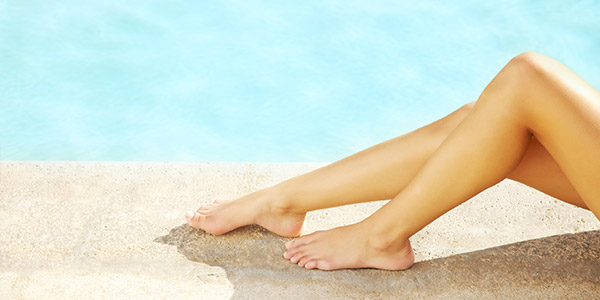For much of the year, you protect your feet by wearing closed-toe, supportive shoes. But when summer hits, sandals, flip-flops and bare feet become irresistible. Heed these tips to keep your feet and toenails healthy.

Get personalized, coordinated care across Northern California through the Sutter network.
View Patient ResourcesMake appointments, message your doctor and more through our patient portal.
Enroll NowAccess award-winning, comprehensive primary and specialty care for your whole family.
View All ServicesOur contributions to medical research and education lead to better healthcare outcomes.
Research at SutterJoin our robust training programs led by nationally known healthcare leaders.
Explore OpportunitiesExplore the ways we provide innovative, compassionate care through our network.
Learn About Sutter HealthShape the future of healthcare and build your career within our diverse teams.
Find Jobs
Get personalized, coordinated care across Northern California through the Sutter network.
View Patient ResourcesMake appointments, message your doctor and more through our patient portal.
Enroll Now
Make appointments, message your doctor and more through our patient portal.
Enroll NowAccess award-winning, comprehensive primary and specialty care for your whole family.
View All ServicesOur contributions to medical research and education lead to better healthcare outcomes.
Research at SutterJoin our robust training programs led by nationally known healthcare leaders.
Explore Opportunities
Join our robust training programs led by nationally known healthcare leaders.
Explore OpportunitiesExplore the ways we provide innovative, compassionate care through our network.
Learn About Sutter HealthShape the future of healthcare and build your career within our diverse teams.
Find Jobs
Shape the future of healthcare and build your career within our diverse teams.
Find JobsFollow this advice to keep you feet and toenails pain-free.
For much of the year, you protect your feet by wearing closed-toe, supportive shoes. But when summer hits, sandals, flip-flops and bare feet become irresistible. Heed these tips to keep your feet and toenails healthy.

Keeping your feet in top shape starts with healthy skin. When you wear sandals and flip-flops without socks, heels tend to lose grip and slide as you walk, causing friction on your feet. That movement increases susceptibility to calluses and dried skin, which may eventually crack and create fissures or sores, leading to pain and infection.
“To prevent this, it’s important to file down your calluses and moisturize when rough skin starts to build up,” says Jeffrey Gregori, DPM, a foot and ankle specialist at Palo Alto Medical Foundation.
Care for your feet in three easy steps:
Feet require regular care, but how often varies from person to person. “Everyone builds up calluses at different rates based on the shoes you wear and the skin you have,” Dr. Gregori says.
Warm weather exposure also affects your toenails. To keep them short and healthy, trim nails straight across and then file down any sharp edges. Cutting edges with a nail clipper could promote abnormal nail growth and create spikes that lead to ingrown nails and infection.
Because fungi love warmth and humidity, summer creates ideal conditions for fungal infection. If your toenails look thick and discolored, see your doctor for treatments, such as oral antifungal drugs, nail cream or medicated nail polish.
If you like to paint your toenails in the summer, only do so if they’re healthy and infection-free. Consider using an antifungal, clear base coat before applying the polish. And leave nails paint-free for at least one week every month; sunlight and dryness discourage fungal growth.
Although they’re comfortable and fun, flip-flops, sandals and other summer shoes generally offer less foot support and increase your risk for Achilles tendonitis and plantar fasciitis—conditions that cause chronic pain in the back of your legs and in your heels, respectively. That’s because weak arch support strains the Achilles tendon, which runs from your calf to your heel bone, and the plantar fascia, the tissue band that extends along the bottom of the foot.
The takeaway: Wear shoes that fit your activity. For instance, summer footwear works just fine for walking around poolside, but if you’re going for a long walk, put on more supportive athletic shoes.
“I give my patients a general rule,” says Dr. Gregori. “If you’re going to be walking at least 75 percent of the day, wear walking, running or tennis shoes. If you’re walking less than 25 percent of the day, a sandal or flip-flop is probably OK.”
Keep in mind, however, that if you wear low-support shoes multiple days in a row (even if you only wear them a few hours a day), you could still develop tendonitis or plantar fasciitis. One option: Choose open-toe shoes made by brands that build in more arch support, including Oofos, Vionic and Birkenstock.
Whatever you wear, pay attention to your comfort while you stand or walk. If you feel pain in your legs or heels, consult a podiatrist for treatments, such as stretching and strengthening exercises, orthotics and physical therapy.
“You can wear sandals—but in moderation,” Dr. Gregori says, “so your feet stay strong and healthy.”
Look up helpful health information.
Practical info for Sutter patients.
Online tools to help you make decisions about your health.
Check-ups, screenings and sick visits for adults and children.
Expertise and advanced technologies in all areas of medicine.
For serious accidents, injuries and conditions that require immediate medical care.
After-hours, weekend and holiday services.
Convenient walk-in care clinics for your non-urgent health needs.